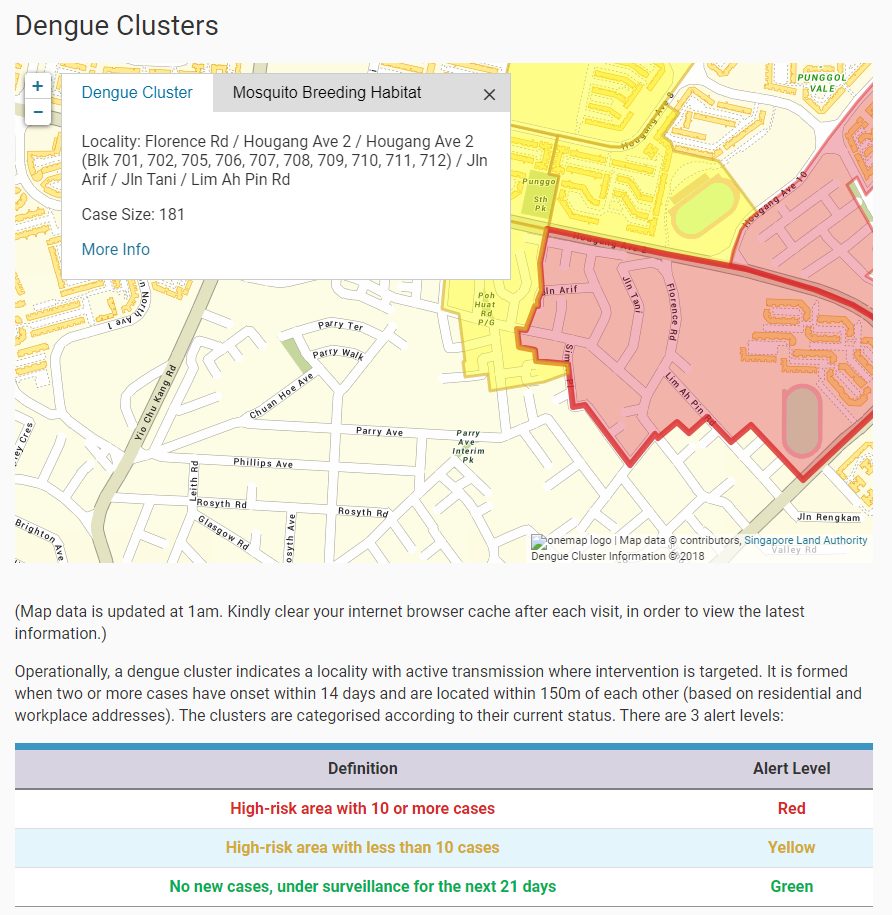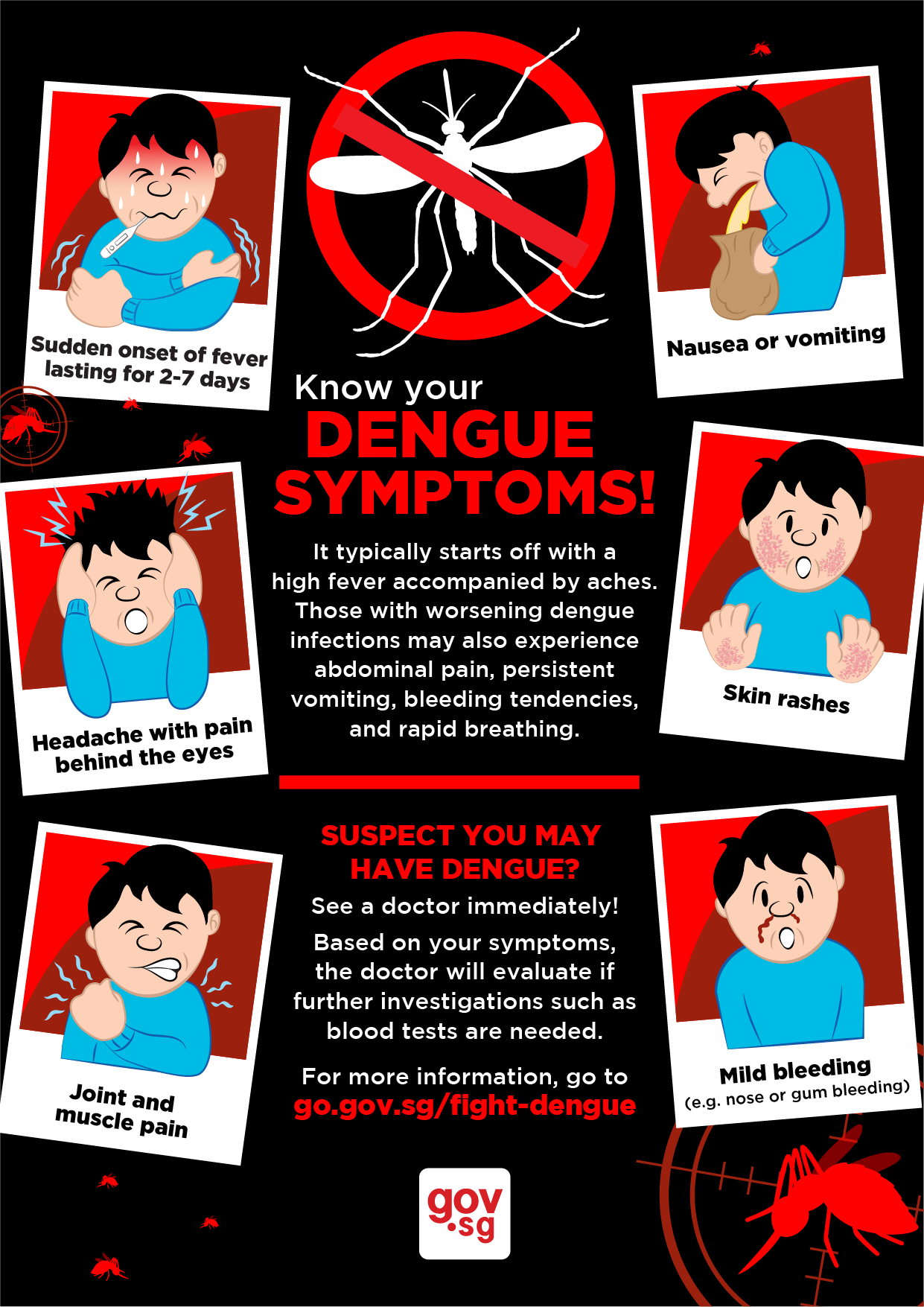Dengue cluster in your neighbourhood? Here's what you need to know and do

In 2020, Singapore had a “historic” dengue outbreak, with a total of 35,315 reported cases.
Then in June 2021, the National Environment Agency (NEA) warned that mosquito populations of the dreaded Aedes aegypti breed have grown by 30 per cent in April, compared with January.
Also, as we enter warmer and humid months from June to October, the risk of higher dengue transmission is a concern. In fact, Singapore experienced up to 35.5 degrees celsius weather between Oct 1-14, 2021.

Besides the weather, some reasons for the heightened increase of dengue cases are the accelerated breeding cycle and maturation of the Aedes aegypti mosquito vectors and shorter incubation periods of the dengue virus during high-temperature months.
NEA defines a dengue cluster as a location in Singapore where two or more cases took place within 14 days and within 150m apart (based on residential and workplace addresses).
As of June 2021, there were more than 2,700 dengue cases and approximately 22 active dengue clusters (i.e. high-risk areas are the ones with ten or more cases) across the island.
Then, the most active cases seemed to be these residential zones – Clementi West Street 1, Hougang Avenue 6, 8 and 10, Jurong East Street 32, Mei Chin Road, Mei Ling Street, and Stirling Road.
No surprises then if you notice increased anti-mosquito fogging activities in your neighbourhood. But is that enough? What if you’re living in a landed property?

Furthermore, according to the NEA, with more people Working-from-Home (WFH), there could also be more “biting opportunities” for the day-biting Aedes aegypti mosquito, hence the higher risk of dengue transmission.
In fact, a study between NEA and the National University of Singapore’s Saw Swee Hock School of Public Health found that adults between 20 and 64 made up a majority of the infected statistic since they were most likely the ones staying home and working during the pandemic.
Although Singapore now officially has four serotypes of the dengue strain, their study cited more than half of the positive dengue samples since February 2021 to be of the less common dengue serotypes 3 (DENV-3) and 4 (DENV-4).
For instance, the DENV-3 serotype, which has not been dominant for the last three decades, has been detected in the dengue cluster at Cashew Terrace and Hazel Park Terrace, while DENV-4 has been detected in clusters at Hougang Central and Pasir Ris Street 21.

Unfortunately, although a vaccine for dengue is available, it continues to be fatal. Anyone can contract dengue fever more than once in their lives, so we must do our part in keeping the country safe.
The only way to prevent dengue is to start at the source and prevent the buildup of stagnant water, which is where the Aedes mosquito breeds.
Check your home to make sure that there is no stagnant water (even as little volume as the size of a 20-cent coin is enough for breeding) in flower pot plates or vases, hardened soil, exposed barrels, buckets, puddles of water, and roof gutters and drains.
Do the Mozzie Wipeout at least once a week to prevent mosquito breeding.

Last year, a report by the NEA cited that the incidence rate for residents living in landed homes was six times higher than those living in HDB flats, as landed properties have a larger variety of structures and receptacle types that easily double up as mosquito breeding grounds.
Follow this 11-point checklist to ensure that your home is as safe from mosquitoes as possible at all times:
ALSO READ: Plants that keep mosquitoes away from your home
This article was first published in 99.